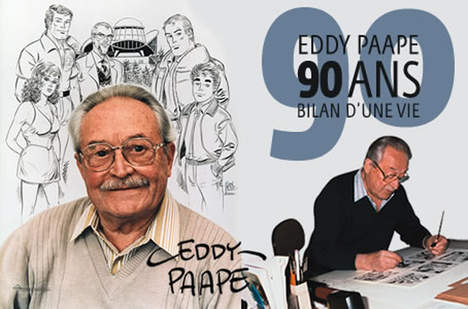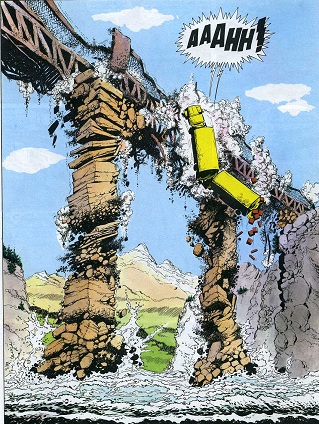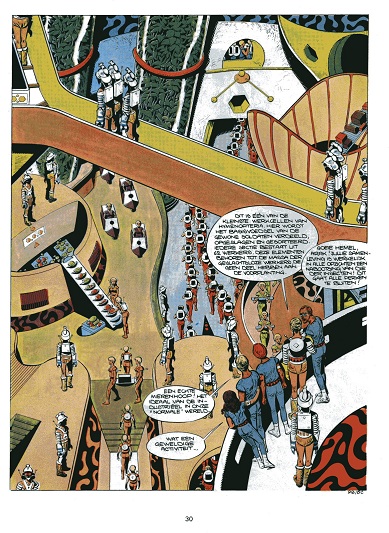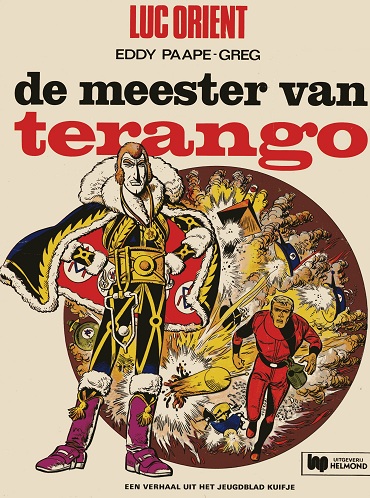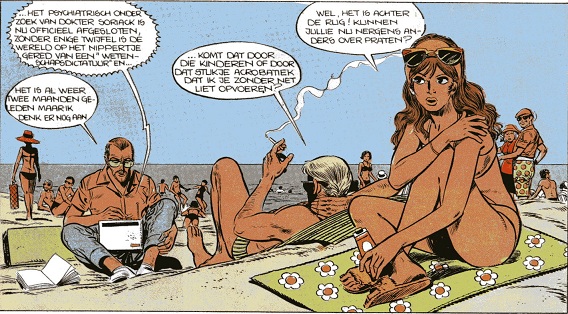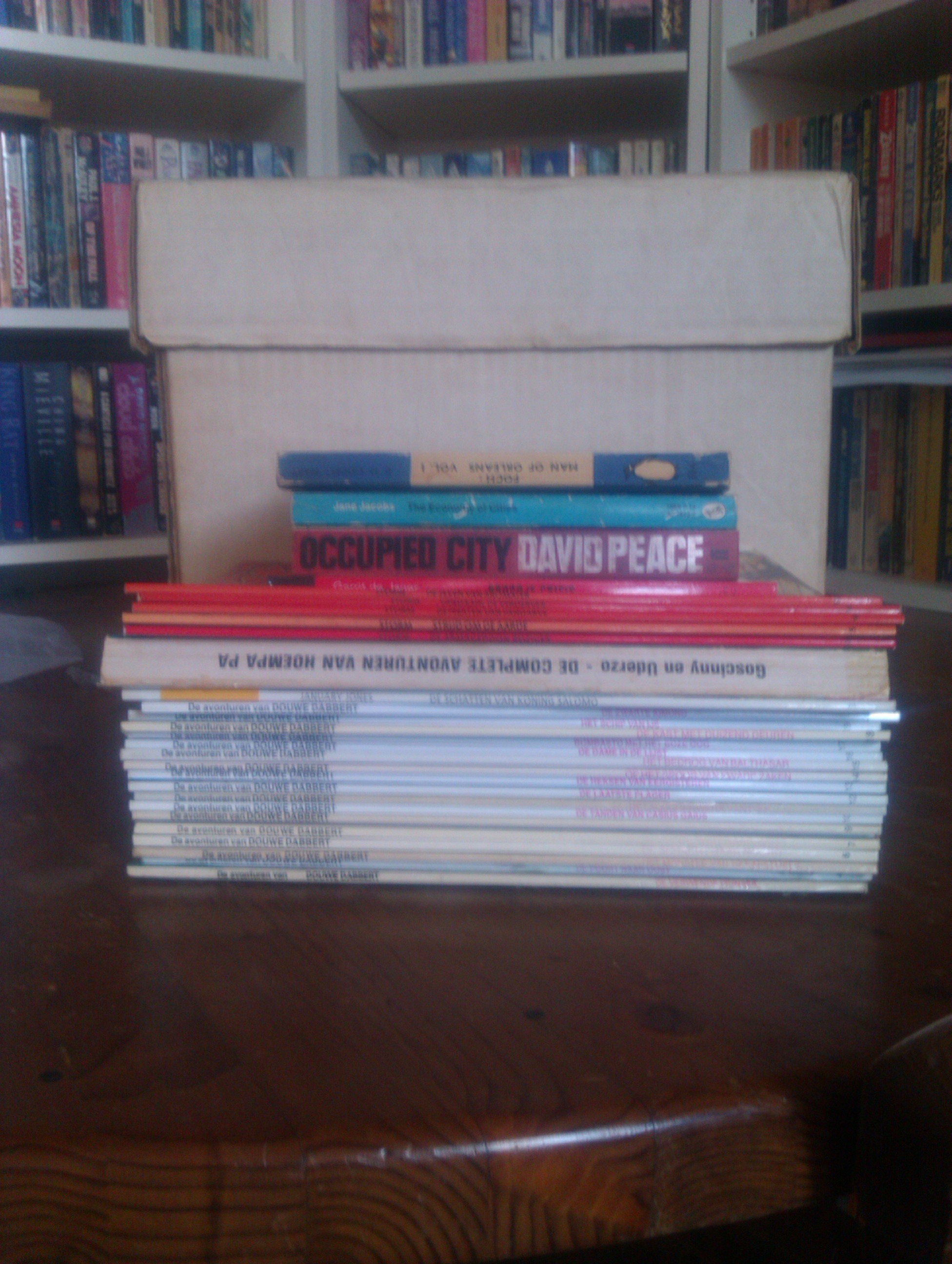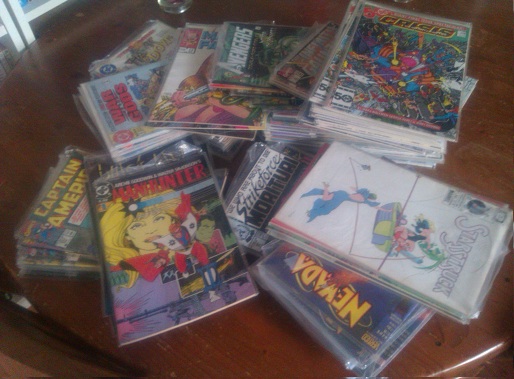
A while back I spent the weekend at my parents and I took the opportunity to pick some of the several thousands individual comics –floppies– I still have stashed away there. It’s been well over a decade since I last bought a new comic in this format, back when I was still a serious collector. Back then I was all about the floppies, buying everything that looked interesting and cheap, but not having been a comics collector for the better part of the last decade has cured me off that. The big disadvantage of the classic comic being that they’re relatively hard to store and, well, look a bit naff when left out in your living room.
It was Tom Spurgeon’s recent post about which comics you read during the eighties and which you regretted missing out on that got me thinking about floppies again. I started seriously buying comics at the tail end of the eighties, spending much of the nineties combing through back issue boxes looking for interesting series I’d read about. That was really the only way you could get your hands on many classic series back then; the internet was too slow for pirating comics, while the great reprint programmes only got started at the turn of the millennium. Even quite recent Marvel or DC stories and titles were only to be had in back issue form, let alone series done by now defunct publishers.
The end result was that I built up a collection full of holes and odds and sods, a couple of issues here or there of series I saw advertised in Comics Interview, half a run of something praised in Amazing Comics, loads of comics that looked familiar and were cheap enough to take a chance at, but very rarely complete runs. Spelunking through comics boxes at shows or obscure comics shop was fun, but readers never had it so good as now, when so much is available at the click of a mouse at Amazon (other online retailers are also available).
The appeal of buying single issues as opposed to trade paperbacks or collections has long faded, but getting these comics out has gotten me a bit nostalgic nonetheless. With floppies you have so much more of a connection to comics as a wider field, through house ads, letter pages and editorials, not to mention having that weekly Thursday evening ritual of trekking to the local comic shop and picking up the latest issues. You don’t really have that buying a Peanuts collection from a bookstore.
(Pictured above, complete runs of, clockwise from the top: Hawk and Dove, Barbara & Karl Kesel, Greg Guler, War of the Gods, George Perez and Russell Braun, the Perez/Ralph Macchio Black Widow four parter from Marvel Fanfare, Kurt Busiek’s and Perez (notice a pattern?) run on The Avengers, followed by the Perez drawn crossover series Infinity Gauntlet (with Jim Starlin) and Crisis on Infinite Earths (Marv Wolfman), Elaine Lee and Kaluta’s Starstruck, Steve Gerber and Phil Winslade’s Nevada, Strikeforce Morituri, the first 20 issues by Peter B. Gilis and Brent Anderson, the Goodwin/Simonson Manhunter, Howard Chaykin’s Black Kiss and finally perhaps Mark Gruenwald’s finest hour on Captain America, #357 to 370, with Kieron Dwyer and Ron Lim. )
